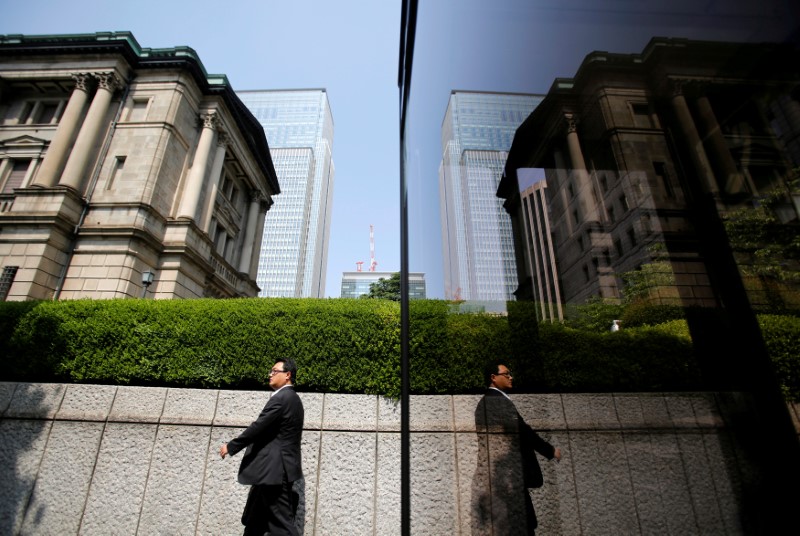(Bloomberg) -- Prime Minister Fumio Kishida appears to be counting on the Bank of Japan to keep borrowing costs near rock-bottom lows as his government paves the way for continued spending even after a record-breaking splurge during the pandemic.
The premier, seen as fiscally cautious before he became leader, has signed off on changes to an annual fiscal policy plan that loosen rather than tighten the corset constraining the nation’s spending plans. And this is for an economy that already has the developed world’s largest public debt load.
The government has dropped its reference to a target to balance Japan’s books by the year ending March 2026 and its language on inflation is sounding a lot more aligned with the BOJ as it seeks to achieve price growth “in a stable and sustainable manner.”
While there are still no price tags on Kishida’s New Capitalism measures or his ramped-up spending on defense, the changes to the policy plan suggest he is maximizing scope for flexibility if he wants to splash out and the central bank will need to play its part by making further borrowing affordable.
“The BOJ has already become a part of debt management policy from the government’s point of view,” said Ryutaro Kono, chief Japan economist at BNP Paribas (OTC:BNPQY) SA. “Yield curve control makes policy makers wrongly assume that the cost of spending is zero.”
The immediate takeaway is that the government still wants the BOJ to stick with a current policy stance that keeps a cap on 10-year government debt yields, even if that means the yen weakens further.
The changes also suggest the prime minister won’t likely be pushing so hard for regime change at the central bank when Governor Haruhiko Kuroda’s term ends next April. In that sense, Kishida’s view on monetary policy is looking a lot more like the Abenomics policies of former Prime Minister Shinzo Abe than something new.
Still, the changes may also mean Kishida has a longer game-plan in mind and is ensuring support within his party and the public before an election in July that could provide him the three-year time frame to show his true colors and to bring real change to Japan’s economy.
Read More: Kishida Could Rule Japan for Years After Proving Doubters Wrong
Many economists simply see old spending tendencies returning.
“Chances are high that he is no longer someone who favors fiscal discipline,” Kiichi Murashima and Katsuhiko Aiba, economists at Citigroup (NYSE:C), wrote in a report last week. “There is an increasing risk that government finances will deteriorate as he goes with policies that try to benefit everyone in an attempt to please everyone.”
Shouji Nishida, head of a pro-spending group in the party with ties to Abe, said dropping the calendar-based goal is a clear sign of change and that Japan is heading toward more aggressive fiscal policy. It also shows his group’s viewpoint gaining traction within the Liberal Democratic Party, said Nishida, an advocate of Modern Monetary Theory.
Taking a more orthodox stance, Finance Minister Shunichi Suzuki said there has been no change in the government’s fiscal target.
The version of the plan from the prime minister’s office was revised extensively by party officials, according to an LDP heavyweight, who spoke on condition of anonymity.
The comments suggest that Kishida is allowing the party to have more say on policy than Abe or former Prime Minister Yoshihide Suga. Kishida has said one of his main strengths is his “ability to listen.”
Regarding the role of the BOJ, Abe recently described the central bank as a subsidiary of the government, signaling no need for concern about public debt. The former leader has also helped drive the calls for increased spending on defense. The government said it would considerably strengthen defense over the next five years in the policy guideline.
“Japan is a rare case among major economies,” said Yuichi Kodama, chief economist at Meiji Yasuda Research Institute. “The talk of spending goes on and on without any discussion of how it will be funded. They just end up racking up more government debt.”
The BOJ is currently capping 10-year bond yields at 0.25% by conducting unlimited bond-buying operations every business day. That has helped the yen to hit 133 per dollar, its lowest level since April 2002, as Japan’s interest rates diverge from rising levels in the US and elsewhere.
Since Kuroda took the helm in 2013, the benchmark 10-year rate has stayed below 1%, containing borrowing costs for a government weighed down by more than 1,200 trillion yen ($9 trillion) of public debt.
Kuroda has repeatedly said BOJ policy is all about achieving its inflation target and is not intended to help the government finance spending.
The debt servicing costs account for more than a fifth of this fiscal year’s 107.6 trillion yen annual budget. The finance ministry has estimated that those costs would increase by as much as 3.7 trillion yen by fiscal 2025 if interest rates in Japan go up by 1%.
The BOJ is also helping the nation’s finances more directly through profits from its asset holdings. The national treasury received 1.26 trillion yen from the BOJ in fiscal 2021, the most since 2001, according to a central bank financial statement released last month.
“Yield curve control is a sin,” Kono said. “Politicians just get hooked on spending, leaving the BOJ unable to make any exit without careful consideration of its impact on the nation’s finances.”
©2022 Bloomberg L.P.
